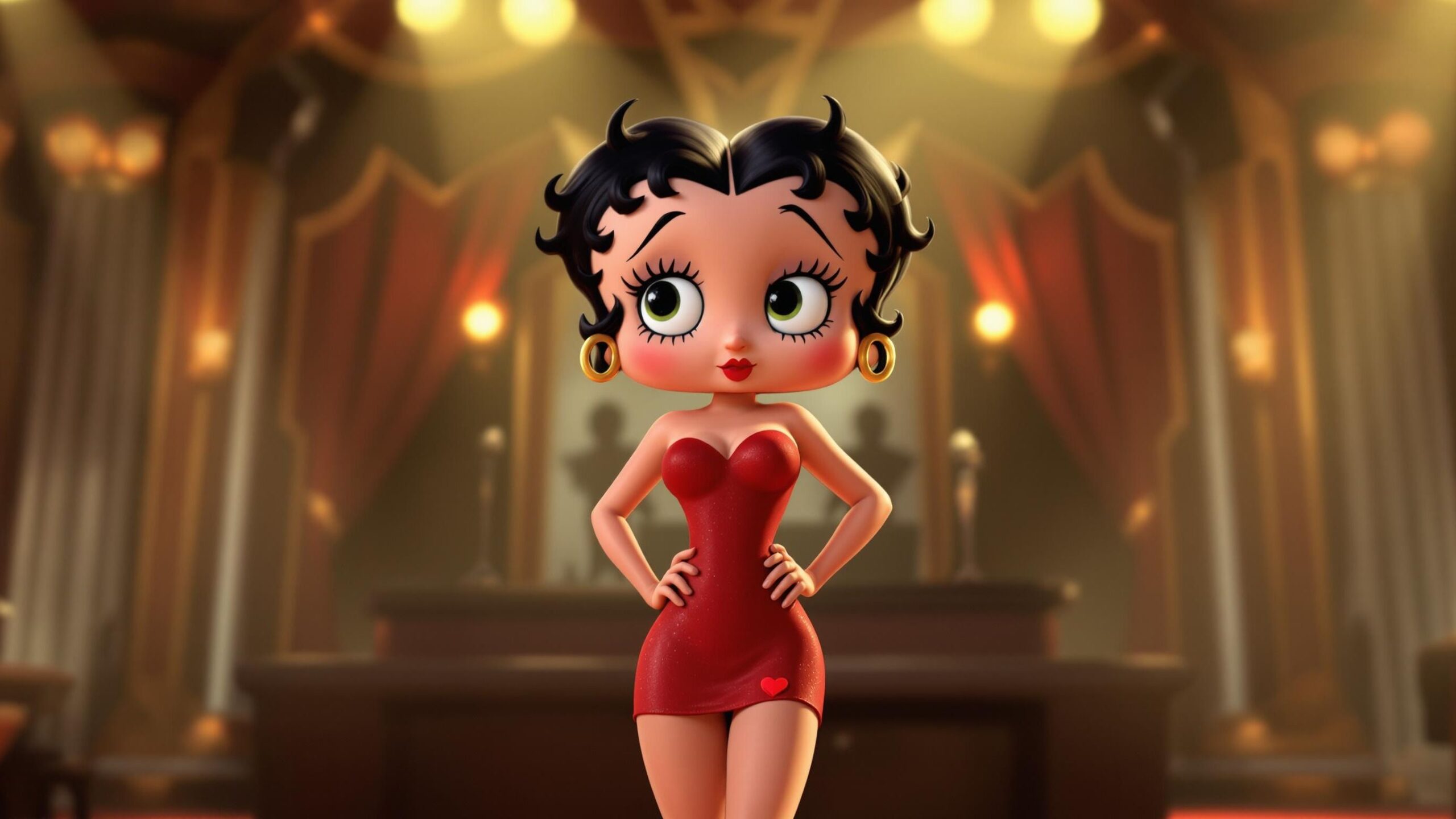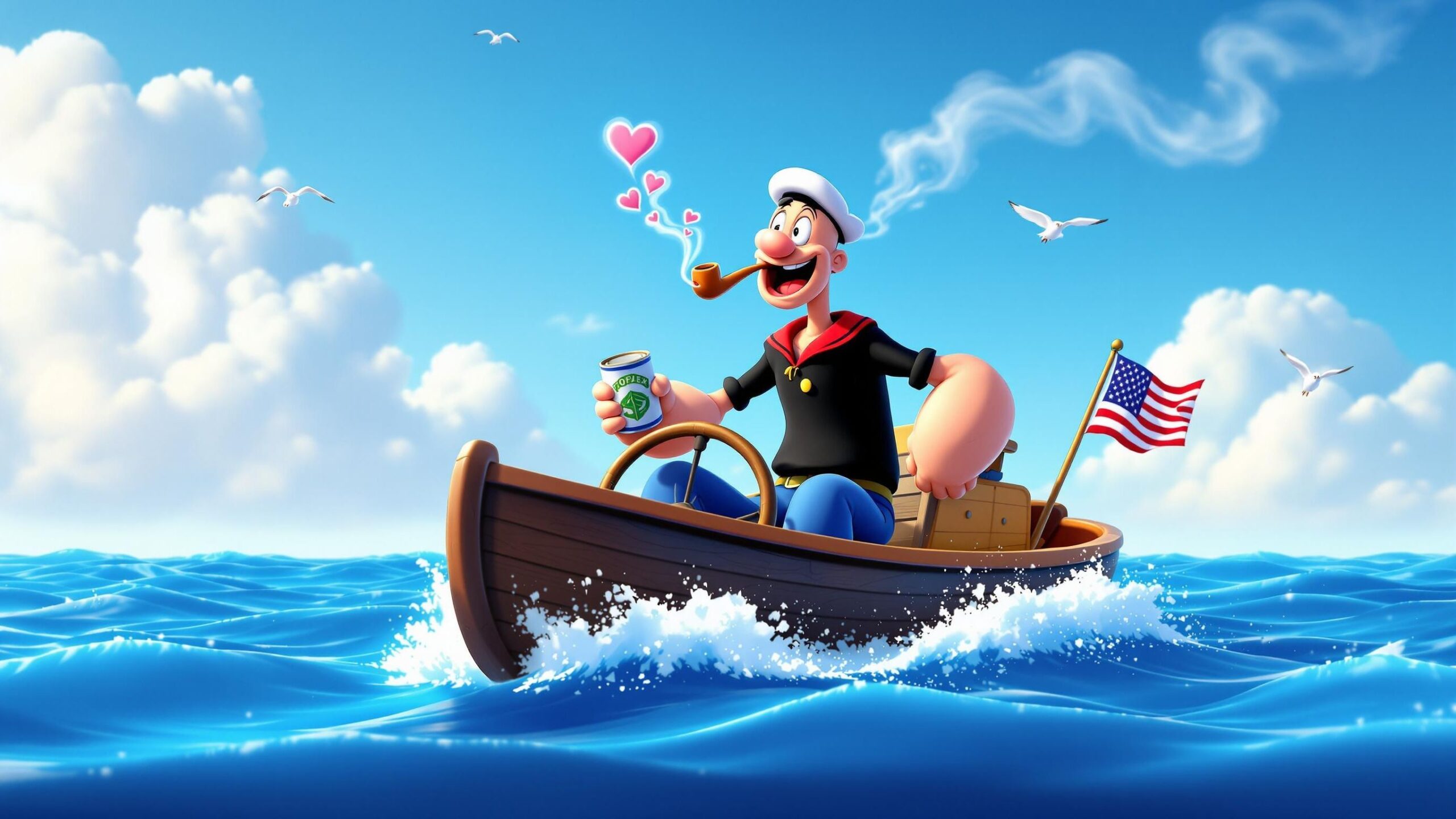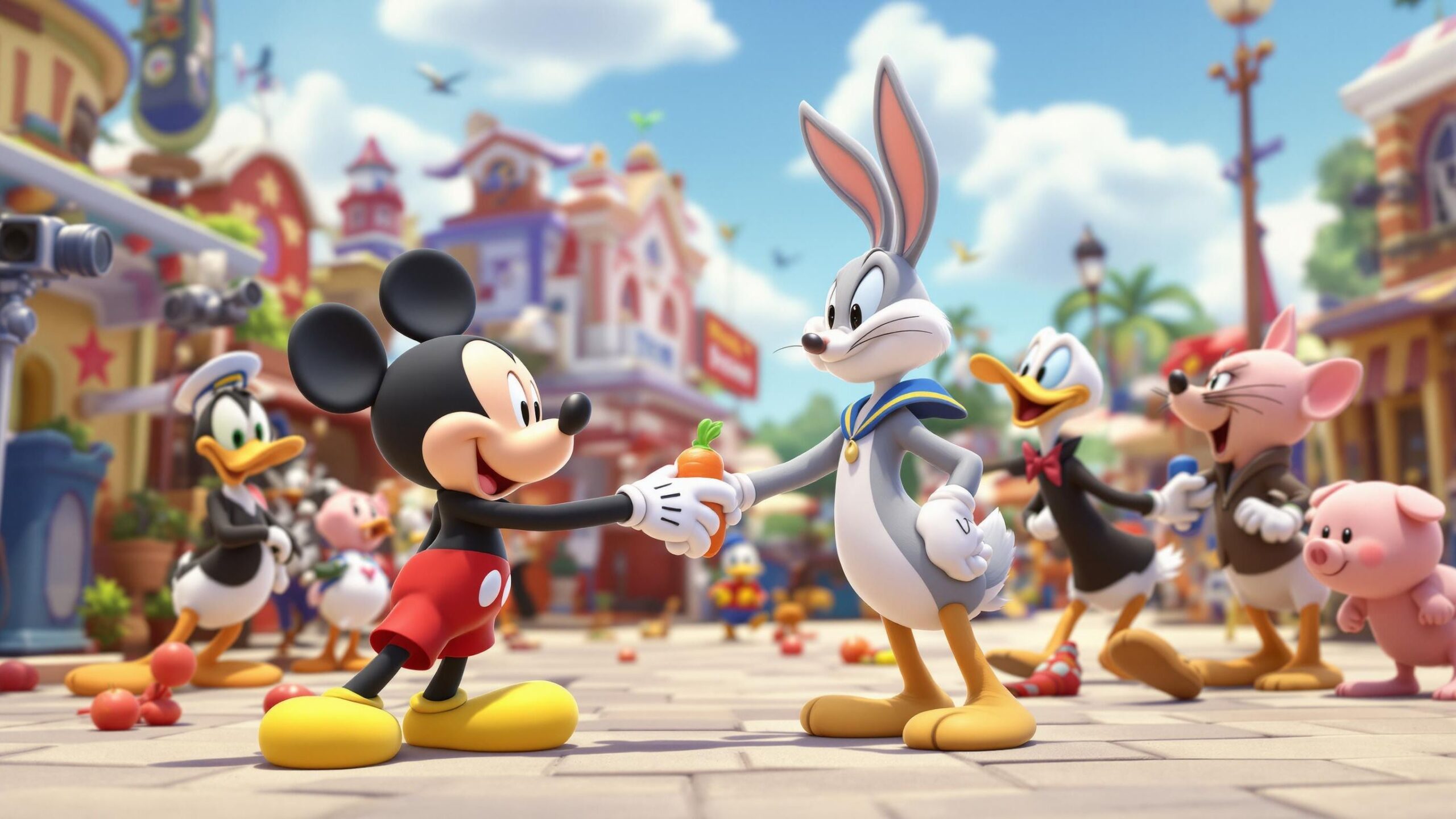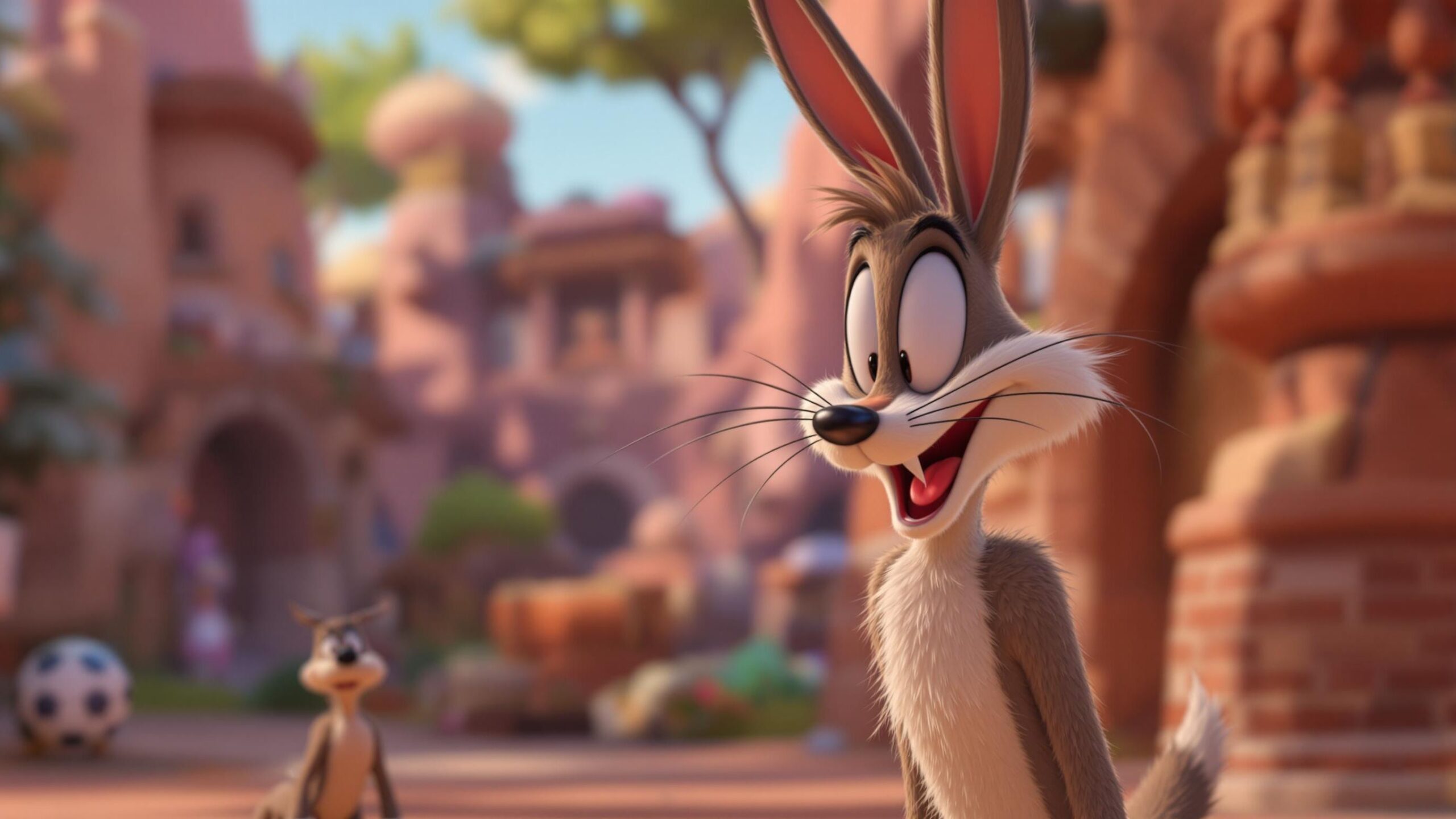Before Pixar perfected CGI or anime conquered global fandoms, there was a golden age where hand-drawn heroes ruled the screen. Saturday mornings were sacred, reruns were ritual, and the sound of zany music cues meant one thing: it was cartoon time. These characters weren’t just entertainment—they were the cultural glue of generations. They taught us to laugh, to root for the underdog, and that an anvil to the head could be comedy gold. This list celebrates the timeless titans of animation—the ones who didn’t need high-definition to make an impact. From jazz-loving flappers to muttering sailors, wisecracking rabbits to ghost-hunting dogs, these classic cartoon characters helped shape what animation is today. Their humor is eternal, their style unforgettable, and their legacy unshakable. So, sit back, pour yourself a bowl of cereal, and get ready to revisit the legends who leapt off the drawing board and straight into our hearts. Let’s count down the greatest classic cartoon characters of all time—because some icons are forever inked into our imaginations.
#10: Betty Boop
Before Marilyn Monroe’s white dress or Madonna’s cone bra, there was Betty Boop—a sassy, flirtatious icon who danced through the black-and-white screens of the 1930s. Debuting in 1930’s Dizzy Dishes, Betty wasn’t just a cartoon—she was a cultural moment. With her short bob, garter, baby-doll voice, and signature “Boop-Oop-a-Doop,” she embodied Jazz Age glamour and flapper rebellion. What made Betty Boop groundbreaking was her confident femininity in a medium dominated by slapstick gags and male leads. She wasn’t just a supporting character—she was the show. At a time when women’s roles were limited both onscreen and off, Betty strutted across the screen with a wink and a boldness that was downright revolutionary. Though censors eventually toned her down, her legacy as one of the first animated female stars endures. She’s still on lunchboxes, fashion items, and posters nearly a century later. Betty Boop remains a symbol of playful defiance, unapologetic style, and vintage cartoon charm that will never go out of fashion.

#9: Popeye the Sailor Man
Armed with spinach, forearms like tree trunks, and a muttering mumble that somehow always got the point across, Popeye the Sailor Man punched his way into animation history. Debuting in 1929’s Thimble Theatre, Popeye became an icon of perseverance, humor, and underdog determination. Whether he was rescuing Olive Oyl from the burly Bluto or solving problems at sea with a squint and a slug, Popeye represented old-school, working-class heroism. What made him timeless was his relatability—he was flawed, goofy, and had a weirdly endearing sense of morality. The spinach bit became more than a gimmick; it turned into a symbol of inner strength. Popeye’s cultural impact was so great that spinach sales skyrocketed in the U.S. His cartoons mixed physical comedy with heart, and his catchphrases—like “I yam what I yam”—still echo today. In a world full of flashy superheroes, Popeye remains a rough-around-the-edges reminder that strength often lies in the simplest things.

#8: Fred Flintstone
Yabba-Dabba-Doo! With that iconic shout, Fred Flintstone roared into pop culture as the ultimate prehistoric everyman. As the star of The Flintstones, the first prime-time animated TV show, Fred wasn’t just a caveman—he was the cartoon reflection of 1960s suburban America. With his blue tie, gravelly voice, and Bedrock bellow, Fred was a lovable loudmouth with a heart of gold. He worked hard at the rock quarry, got into wacky get-rich-quick schemes, and loved his family fiercely—especially his patient wife, Wilma, and adorable daughter, Pebbles. Inspired by The Honeymooners, Fred blended sitcom humor with stone-age absurdity, driving dinosaur-powered cars and ordering takeout from mammoth ribs. But what truly made Fred a classic was his relatability. He wasn’t a superhero—he was a guy trying to do right by his family and occasionally go bowling. Decades later, Fred’s influence can be seen in nearly every animated dad who followed—from Homer Simpson to Peter Griffin.
#7: Daffy Duck
If Bugs Bunny is the suave trickster, Daffy Duck is the unhinged chaos engine—and that’s exactly what makes him legendary. Since his 1937 debut, Daffy has been flapping and sputtering through some of the wildest antics in animation. Where others play it cool, Daffy is desperate, dramatic, and gloriously self-absorbed. Whether he’s arguing with Bugs over the spotlight or getting blasted to smithereens by Elmer Fudd, Daffy always bounces back—usually angrier, louder, and somehow funnier. His voice (thanks to the genius of Mel Blanc), his explosive temper, and his utter lack of self-awareness make him endlessly watchable. He evolved from a screwball loon to a greedy schemer, giving him surprising depth. Daffy Duck is proof that sometimes, the funniest characters are the ones who just can’t catch a break—and refuse to give up anyway. His chaotic energy paved the way for countless animated antiheroes, and he remains a masterclass in animated frustration and hilarity.
#6: Scooby-Doo
Ruh-roh! Scooby-Doo, the talking Great Dane with a love for snacks and ghost-hunting, has been solving mysteries since 1969—and we still can’t get enough of him. As the face of Scooby-Doo, Where Are You!, Scooby wasn’t just comic relief—he was the heart of Mystery Inc. Alongside Shaggy, Velma, Fred, and Daphne, Scooby helped unmask countless “ghosts” who always turned out to be grumpy adults in costumes. But it was Scooby’s goofy charm, expressive face, and signature stutter that made him unforgettable. He brought warmth and laughter to every creepy chase scene, proving that fear can be funny. Over the decades, Scooby’s legacy expanded into countless spin-offs, movies, memes, and merchandise. He’s been animated in almost every style imaginable, but his essence never changed: a lovable coward who always finds courage when his friends need him. Scooby-Doo didn’t just outlast trends—he became one. And no matter the mystery, one thing’s certain: Scooby snacks will always save the day.
(Continued in next message…)
#5: Tom and Jerry
You can’t talk classic cartoons without bringing up the eternal game of cat and mouse—literally. Tom and Jerry made their debut in 1940, and their slapstick feud quickly became one of the most beloved rivalries in animation history. Tom, the pompous housecat, and Jerry, the clever and mischievous mouse, redefined visual comedy through their epic chases, silent gags, and cartoon violence that pushed the limits of animation. What made them iconic wasn’t dialogue—there was hardly any. Instead, they relied on expressive animation, impeccable timing, and outrageous creativity to keep audiences in stitches. From exploding pianos to mousetrap mayhem, every gag felt fresh. The artistry behind each short—especially under creators William Hanna and Joseph Barbera—earned the series multiple Academy Awards. Yet for all the chaos, there was an unspoken affection between the duo, a tension that made the rare moments of truce feel deeply meaningful. Tom and Jerry’s legacy lies in the universality of their humor—no language needed, just a good chase and a whole lot of heart.
#4: Donald Duck
With his sailor shirt, red bow tie, and explosive temper, Donald Duck is one of the most relatable—and funniest—characters Disney ever created. Debuting in 1934, Donald wasn’t smooth or heroic like Mickey. He was grumpy, accident-prone, and completely unfiltered, which made him feel real. Whether he was struggling with lawn equipment or trying to babysit rambunctious nephews Huey, Dewey, and Louie, Donald’s meltdowns became legendary. Voiced by Clarence “Ducky” Nash with a squawking brilliance, Donald’s speech pattern is iconic in itself. Yet beneath the tantrums lies a surprisingly kind-hearted duck who always tries—however messily—to do the right thing. His versatility shined through decades of shorts, comics, and series like DuckTales, where he became a protective father figure. Donald’s humor comes from the chaos he attracts, but his staying power comes from his determination to survive it all with feathers (mostly) intact. He’s the lovable loser who keeps getting back up—and yelling about it the whole way.
#3: Bugs Bunny
What’s up, Doc? With that one line, Bugs Bunny became animation royalty. Introduced in the late 1930s and perfected by the 1940s, Bugs was the cool, calm, and confident star of the Looney Tunes universe. Always chewing a carrot and dodging danger with clever tricks, Bugs was the ultimate cartoon trickster—smart, smug, and always one step ahead of his foes. Whether outwitting Elmer Fudd, Yosemite Sam, or Daffy Duck, Bugs turned every confrontation into a masterclass in comedic timing and subversion. He broke the fourth wall, mimicked famous celebrities, and even cross-dressed to escape a jam (or just for fun). More than a wisecracker, Bugs became a symbol of resilience—facing adversity with smarts and sarcasm. He stood for underdogs everywhere, outwitting bullies and outlasting trends. Bugs Bunny didn’t just entertain—he transformed animation into an art form of wit, personality, and rebellion. He’s not just a cartoon character. He’s a cultural icon in a gray rabbit suit.
#2: Mickey Mouse
The mouse that built an empire. Mickey Mouse is more than a character—he’s a global symbol of joy, imagination, and possibility. Created by Walt Disney and Ub Iwerks, Mickey debuted in 1928’s Steamboat Willie and quickly became the face of the Disney brand. With his cheerful smile, high-pitched voice, and iconic ears, Mickey brought a sense of innocence and optimism to audiences during tough times like the Great Depression and World War II. Over the decades, Mickey evolved from a mischievous scamp to a more wholesome, friendly mascot. He headlined hundreds of shorts, starred in feature films like Fantasia, and appeared in everything from theme parks to cereal boxes. Yet Mickey never lost his charm. What made him endure wasn’t just branding—it was his ability to evolve while still radiating kindness, curiosity, and cheer. Mickey Mouse is timeless because he represents the best of what cartoons can be: universal, uplifting, and endlessly imaginative.
#1: Looney Tunes Ensemble (Bugs, Daffy, Porky, and More)
Okay, we’re cheating a little—but how could we possibly choose just one from the legendary Looney Tunes lineup? The Warner Bros. roster from the Golden Age of Animation—Bugs Bunny, Daffy Duck, Porky Pig, Elmer Fudd, Sylvester, Tweety, Yosemite Sam, Road Runner, Wile E. Coyote, and more—wasn’t just a collection of characters. It was a revolution. Each character had a distinct personality, voice, and comedic style, yet they all played together in a chaotic harmony that defined Saturday morning for generations. The brilliance of the Looney Tunes universe came from its mix of slapstick, satire, and sophistication. These characters could spoof classical music, political events, and Hollywood trends—all while getting flattened by anvils or chased through painted tunnels. Mel Blanc’s voice work, Chuck Jones and Tex Avery’s animation direction, and Carl Stalling’s musical scores created a cartoon playground where anything was possible. The Looney Tunes ensemble is classic animation. Their influence stretches from The Simpsons to Animaniacs, from Pixar to meme culture. They didn’t just define a genre—they defined an era.
From the jazz-age sass of Betty Boop to the universe-defining chaos of the Looney Tunes crew, these characters aren’t just nostalgic—they’re foundational. They introduced generations to the power of animation, humor, and creativity. Whether you grew up with Saturday morning reruns or stumbled onto them through streaming, these icons prove that great cartoons never go out of style—they just keep evolving. So next time you hear a “Boop-Oop-a-Doop” or a “What’s up, Doc?”—tip your hat to the legends who paved the animated road we still travel today.




